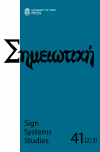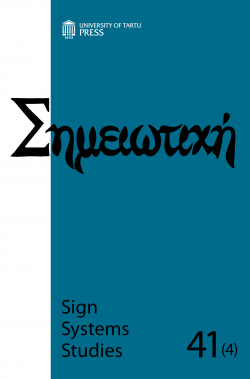
Challenging identity: Lotman’s “translation of the untranslatable” and Derrida’s différance
The concept of “cultural identity” has gradually replaced such discredited concepts as “race”, “ethnicity”, even “nationality” in the conservative political discourse of recent decades which conceives, represents and performs culture as a closed system with clear-cut boundaries which must be defended from contamination. The article employs the theories of Derrida and Lotman as useful tools for deconstructing this understanding of cultural identity, which has recently become an ideological justification for socio-political conflicts. In fact, their theories spring from a thorough critique of the kind of internalizing self-enclosure which allowed Saussure to delimit and describe langue as the object of linguistics. The article identifies and compares the elements of this critique, focusing on Derrida’s and Lotman’s concepts of “mirror structure”, “binarism”, “numerousness”, “textuality” and “semiosphere”. An understanding of mediation emerges which is not reducible to any kind of definitive acquisition, thereby frustrating the pretences of identity, constantly dislocating and deferring any attempt at semiotic self-enclosure. My comparison suggests that Lotman’s “translation of the untranslatable” (or “dialogue”) and Derrida’s différance can be considered analogous descriptions of this problematic kind of mediation. The (de)constructive nature of culture, as described by Lotman and Derrida, challenges any attempt to view cultural formations as sources of rigid and irreducible identities or differences.
More...

